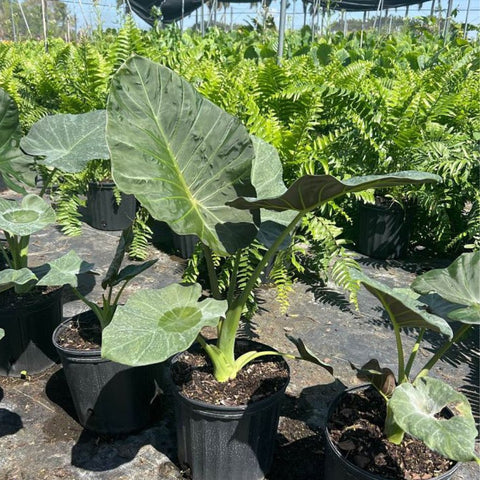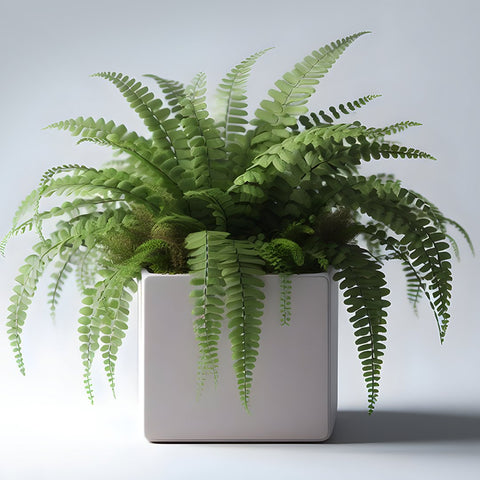Introduction: Embracing the Joy of Spring Gardens
As winter recedes, the earth awakens, ushering in a symphony of vibrant colors and fragrances. For gardeners, spring is a magical time when nature bursts anew, offering fresh starts and inspiring transformations. Spring flowers play a crucial role in garden aesthetics, providing not only visual delight but also supporting biodiversity by attracting pollinators such as bees and butterflies. This blog post explores the enchanting world of spring garden flowers and offers tips on how to make the most of the season with beautiful blooms.

The Magic of Spring Bloomers
A. Early Bloomers: Heralds of Spring
Early bloomers are the first to peek through the soil, often braving the last vestiges of winter to bring us joy and hope. These resilient pioneers are a delight for both seasoned gardeners and novices. Examples include Crocuses and Snowdrops, which can even bloom in a snowy landscape.
Crocus
Crocuses are charming, low-growing plants with cup-shaped flowers available in a spectrum of colors. They are an excellent choice for adding a pop of color in late winter or early spring. As tuberous plants, they are easy to grow and require minimal maintenance.
Snowdrops
Snowdrops are delicate, white flowers that signal the end of winter. They thrive in cool climates and are best planted in groups for a stunning effect. Despite their fragile appearance, they are tough and can even push through snow.
These early bloomers are vital in the garden, offering the first nectar and pollen of the year to honeybees and other pollinators. By planting a variety of early bloomers, you create an inviting space for wildlife at a crucial time of year.
B. Mid-Spring Marvels
As temperatures rise, a broader range of flowers begins to emerge, filling gardens with lush textures and vibrant colors. Mid-spring is an exciting time as gardens transition with new growth and a plethora of bloomers that offer structure and variety.

Tulips
Tulips are perhaps among the most celebrated mid-spring flowers. With countless varieties, their elegant forms and expansive palette range from soft pastels to vivid, saturated hues. Tulips are perfect for gardeners who want to create impactful displays.
Hyacinths
Known for their intense fragrance, Hyacinths bring both aesthetics and olfactory pleasure to the garden. They come in a range of colors and can be grown in pots or directly in garden beds.
Mid-spring flowers are pivotal in maintaining a continuum of blooms, ensuring your garden remains lively and beautiful. Further, they are excellent companions for early bloomers, creating harmonious garden compositions.
The Role of Spring Flowers in Garden Biodiversity
A. Supporting Pollinators
Bees, butterflies, and other pollinators play an indispensable role in natural ecosystems, and your garden can become a haven for these crucial creatures. Spring flowers provide essential resources early in the year, supporting the life cycles of various pollinator species.
B. Biodiversity Benefits
A diverse garden is a healthy garden. By introducing a range of spring flowers, you encourage a stable ecosystem that can better resist pests and diseases. Diversity in plant life supports a variety of beneficial insects, birds, and microfauna that contribute to gardening success.

Cultivating Spring Flowers for Garden Success
A. Choosing the Right Plants for Your Climate
Understanding your climate zone is crucial for successful planting. This ensures you select varieties that will thrive in your regional conditions. Consider factors such as frost dates, rainfall, and temperature ranges when planning your garden.
B. Planting Tips and Tricks
Prepare your garden beds with well-draining soil enriched with organic matter. Plant bulbs and seeds at the appropriate depth and spacing to allow for healthy root development and airflow. Regular watering is vital for establishing new plantings, but be mindful of overwatering, especially in soils prone to poor drainage.
How To Make the Most of Your Spring Garden
A. Integrating Spring Blooms with Perennials and Annuals
Combining spring flowers with perennials and annuals extends the blooming season and adds layers of interest. Choose combinations that complement your garden's aesthetic while ensuring continuous growth and bloom throughout the growing season.
B. Companion Planting Strategies
Pairing certain plants together can enhance growth, reduce pests, and improve flavor in edible gardens. For example, planting garlic alongside roses can deter aphids, while marigolds can keep nematodes at bay.
Explore Spring Blooms with Plantology
At Plantology, we are passionate about helping you cultivate your dream garden. Explore our collections for a diverse range of plants, from vibrant Agapanthus to structural beauties like the Adonidia Palm. Discover high-quality plants that are sure to thrive and inspire.

The Long-Term Care of Spring Gardens
A. Seasonal Maintenance and Care
To ensure your garden thrives, seasonal maintenance is key. This includes deadheading spent flowers to encourage new growth, mulching to retain moisture, and fertilizing with balanced nutrients. Consistent pruning and monitoring for pests are essential for plant health.
B. Preparing for Success in Upcoming Seasons
Plan for future growth by recognizing the life cycle of your plants. Rotate planting locations to maintain soil fertility and reduce disease pressure. Consider enhancing your garden layout with new additions based on seasonal performance assessments.
Conclusion: Celebrate Spring with Vibrant Blooms
Spring is a time of rebirth and renewal. By carefully selecting and nurturing your garden's flowers, you can create a magnificent display that celebrates the vitality and beauty of the season. Visit Plantology for all your spring gardening needs and embrace the joy of a thriving garden full of life and color.
Diving Deeper Into Spring Blooms
I. Iconic Spring Flower Varieties and Their Unique Features
A. Daffodils (Narcissus)
Daffodils are perhaps the quintessential spring flower, renowned for their bright yellow blooms and trumpet-shaped flowers. They embody the essence of spring with their cheerful appearance and are known for their hardiness. Daffodils thrive in sun-drenched areas and well-drained soil. Not only are they easy to grow, but they also have a natural ability to repel deer and other pests, making them a practical and beautiful addition to any spring garden.

The symbolism of daffodils is steeped in joy, renewal, and new beginnings, offering not just a feast for the eyes but also symbolic inspiration. These perennials can be planted in clusters under trees, along pathways, or in mixed borders, creating a tapestry of sunny hues that amaze onlookers. Beyond the commonly known yellow blooms, daffodils come in a variety of colors and forms, from pure white to hues tinged with orange and pink. They can adapt to your garden's aesthetic preferences with minimal fuss.
B. Primroses (Primula)
Primroses are a diverse group of flowers that herald the start of spring with their exquisite blooming. They are available in an array of colors, from soft pastels to vivid shades, ensuring there's a variant suitable for any garden style. Preferring shaded, moist environments, primroses are ideal for planting in woodland gardens or shady spots that need a splash of color.
Primroses can create a naturalistic look, especially when allowed to naturalize in suitable conditions. They not only provide aesthetic pleasure but also contribute to the biodiversity of garden environments, attracting early pollinators who feed on their nectar. With so many species and hybrids available, primroses offer endless opportunities to experiment with color schemes and planting designs.
C. Peonies
Known for their lush, fragrant blooms and robust foliage, peonies are a timeless choice for spring gardens. Available in colors ranging from soft pinks to deep reds and flashy whites, peonies can steal the show in perennial beds and mixed borders alike. These hardy plants require little maintenance once established and can live for decades, providing reliable beauty year after year.

Peonies enjoy sunny locations and benefit from well-drained soil. They are showy, fragrant, and attract not only pollinators but also garden enthusiasts who covet their blooms for floral arrangements and bouquets. Given their durability and ease of care, peonies are a must-have for gardeners looking to enjoy long-lived perennial beauty. They also resist most pests and diseases, adding to their suitability for garden adornment.
D. Irises
With their unique structure and variety of colors, irises are the embodiment of elegance and natural beauty. These perennial flowers are famous for their sword-like foliage and intricate, colorful blooms. Irises can adapt to a range of garden situations, from damp ground as seen with Siberian Irises to the well-drained sunny locales preferred by Bearded Irises.
When choosing irises, gardeners can opt for anything from deep purples to vibrant yellows or pristine whites, facilitating bold landscaping statements or subtle accenting, depending on personal preference. The bloom time for irises can also complement other spring flowers, filling voids in the flowering schedule and enhancing the overall continuity of the garden’s visual display.
II. Designing a Cohesive Spring Garden
Understanding Garden Layouts
Creating a cohesive garden design is as much about intention as it is about plant selection. The key to a beautiful spring garden lies in thoughtful planning. Start with a layout that considers plant height, spreading tendencies, and bloom times. Early spring bloomers are typically lower-growing, while mid to late-spring species may be taller, creating natural layers that contribute to depth and interest.

Consider pathways, focal points, and functionality as integral parts of the design. Paths or stepping stones not only make gardens accessible but also contribute to the visual rhythm. Central features such as ornamental trees or water features can anchor the space, offering visual breaks and capturing seasonal highlights.
Color Theory in Gardening
Understanding and applying color theory can transform a garden from a mere collection of plants into a work of art. Harmonizing colors or creating contrast through complementary hues can shape the garden's mood and appeal. Consider using color as a thematic or mood-setting element, with vibrant, warm colors like yellows, oranges, and reds evoking energy and cheer. In contrast, cooler colors such as blues, purples, and soft pinks offer tranquility and calm.
Varying shades and textures, paired with thoughtful repetition, can guide the eye through the garden, making the space feel unified and dynamic. Using monochromatic schemes with varying shades of the same color or analogous schemes using neighboring colors on the color wheel can also provide depth without overwhelming the senses.
Incorporating Edibles
Merging beauty with functionality, incorporating edible plants into spring gardens offers a dual-purpose approach. Fruits, vegetables, and herbs such as strawberries, kale, and rosemary not only enhance the aesthetic with their varied forms and textures but also contribute to sustainability and homegrown harvests. Companion planting concepts can be applied to maximize growth and deter common pests, helping ensure that both ornamental and edible plants flourish together.

Consider designing an edible border or integrating edibles among ornamentals for a seamless blend that surprises and delights both visually and tastefully. By combining traditional garden plants with edible flora, not only do you create an engaging landscape, but you also contribute to food security and sustainable gardening practices.
III. Advanced Tips for Maximizing Blooming Potential
A. Soil Health and Fertility
Healthy soil is the backbone of any thriving garden. Ensuring your soil is rich in organic matter and well-aerated can significantly impact plant health and flower production. Regularly test soil for pH levels and nutrient deficiencies, and amend as necessary with compost or professional-grade fertilizers tailored to the needs of spring bloomers.
Consider using organic mulches to conserve moisture and suppress weeds, leading to more vibrant blooms and reducing maintenance efforts. Remember, enriched soil directly correlates with the strength, vigor, and bloom quality of your garden plants.
B. Watering Techniques
Watering, when strategic, can make a dramatic difference in garden vitality. The key is to water deeply and less frequently, allowing soil to dry slightly between waterings. This encourages root systems to grow deeper, increasing drought tolerance and overall plant health.
Drip irrigation or soaker hoses can efficiently deliver water directly to the root zone, minimizing waste and reducing the risk of water-related diseases. Be mindful to adjust watering routines based on weather patterns, ensuring plants receive optimal hydration without fostering environments ripe for mold and rot.

C. Pruning and Deadheading
Consistent pruning and deadheading are essential for maintaining a garden's health and aesthetics. Removing spent blooms encourages many plants to redirect their energy into producing more flowers instead of seeds, extending the blooming period and keeping the garden colorful for longer.
Specific techniques, such as hard pruning or methodical cutting back, can promote vigorous regrowth in certain species, ensuring both shape and flowering potential are maximized. Integrate pruning schedules into your maintenance routine to synchronized with plant-specific flowering cycles for best results.
IV. Troubleshooting Common Spring Garden Issues
Dealing with Pests
Spring gardens, while vibrant, can attract a host of potential pests. Aphids, slugs, and snails are common intruders looking to feast on new growth. Employ integrated pest management (IPM) strategies, which prioritize preventative and non-invasive measures. Encourage beneficial insects, such as ladybugs and lacewings, by planting nectar-rich flowers and maintaining biodiversity.
If infestations occur, consider organic pest control measures—like neem oil or insecticidal soaps—that won't harm beneficial species or disrupt the ecosystem balance.
Managing Diseases
Wet spring weather can lead to an uptick in fungal diseases such as powdery mildew and root rot. To mitigate these risks, ensure proper plant spacing for air circulation, and avoid overhead watering, which can support the spread of fungal spores.

Monitoring for early signs of disease and taking prompt action by removing affected areas can prevent more widespread damage. In cases where chemical control is warranted, opt for fungicides that are the least harmful to beneficial organisms, ensuring the garden's overall health remains intact.
VI. Exploring Advanced Garden Design Techniques
Creating Naturalistic Planting Schemes
The trend of naturalistic garden design focuses on creating spaces that echo the fluid beauty of wild landscapes. This approach embraces a diverse mix of textures, colors, and plant forms, fostering environments rich in pollinator activity and ecological benefit.
To create your own naturalistic garden, focus on varying plant textures and heights, incorporating native species suited to your locale’s climate and terrain. Layer plantings to create depth, allowing taller plants to act as a backdrop while shorter species






























Comments (0)
There are no comments for this article. Be the first one to leave a message!